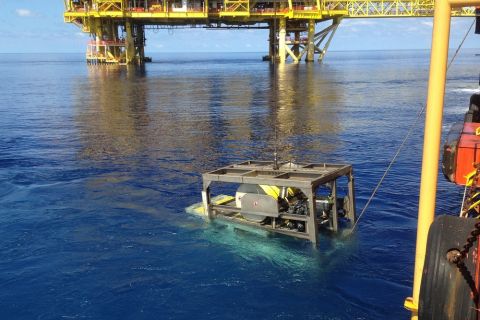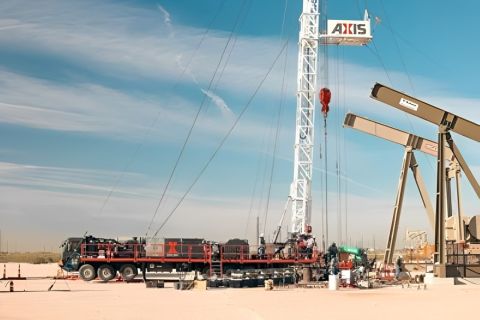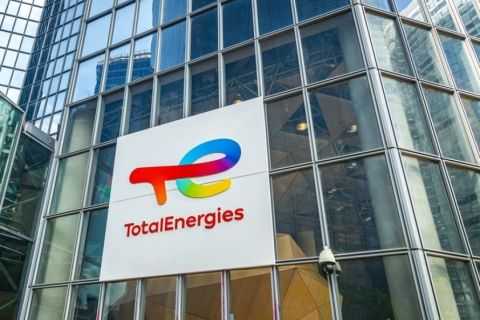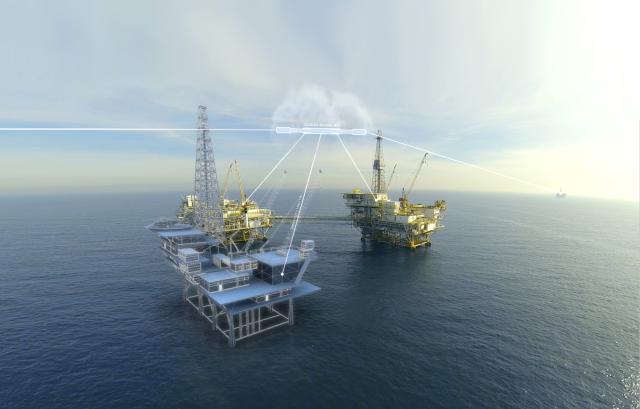
FIGURE 1. The digital twin is a virtual image of an asset, maintained throughout the life cycle and easily accessible at any time. (Source: DNV GL)
The concept of what many understand today as a digital twin has been around for several years under many guises, from model-based optimization to structural reanalysis systems. Recent devel- opments in digital technology have enabled these virtual depictions of systems or physical assets to be used in decision-making processes and other activities that had not been possible in the past.
While the definition of what a digital twin is and what it is not is relatively wide, the consensus is that it allows system information to be available to predict performance through integrated models with the purpose of providing decision support.
Rather than think of a digital twin as a monolith, DNV GL believes it should be considered a collection of elements or components, of various levels of sophistication, each with their own distinct role and function (Figure 1).
Digital twins are still in the early stages of their evolution. Their early development focused on a series of standalone features to inform decision-making during asset design phases. As the market and technology matures, it is expected their sophistication will increase significantly, eventually being dominated by either prescriptive or even autonomous functional elements.
“We have never been in a position where we can create more and better data than today,” explained Per Myseth, head of data services, data management and analytics with DNV GL. “Likewise, we have never been able to combine and analyze information in more advanced ways than we have at present. As this technology evolves, it is vital to combine the criticality and the use cases of the digital twin to fully understand the quality and all the components in it.”
Trust on trial
Companies designing and manufacturing hardware across the oil and gas value chain must prove the safety, quality and integrity of components, equipment and assets through recognized quality assurance principles. However, no standard process exists to provide the same mechanism of trust and value for the digital representation of a physical asset and its behavior.
As oil and gas operators demand proof that digital twins can be trusted and deliver value over time, DNV GL, in partnership with TechnipFMC, has developed a methodology for qualifying the quality and integrity of the technology.
Built upon DNV GL’s recommended practice (RP) for technology qualification, DNVGL-RP-A2031 aims to bring a level playing field to the sector’s varying technical definitions of, and expectations of, dig- ital twins. It will set a benchmark for oil and gas operators, supply chain partners and regulators to establish trust in digital twin-generated data for performance and safety decision-making in projects and operations.
The methodology is being piloted on two subsea field develop- ment projects. Operators and the supply chain wishing to participate are still welcome to contribute in what will ultimately be a new RP, encompassing definitions of the digital twin, to data quality and algorithm performance.
Realizing true value from virtual reality
The major challenge when implementing new digital technologies is the same as when novel hardware technologies were introduced two decades ago. How can you trust that it works when the technology hasn’t been used before? Building trust in the quality and integrity of digital twins is key to extracting maximum value and, subsequently, to its adoption.
Oil and gas companies are increasingly utilizing the technology to bring asset information from multiple sources together in a single and secure place, connecting 3D models with real-time field data during the operation phase.
For example, in October 2019, Kongsberg Digital, a subsidiary of KONGSBERG, signed a $10.5 million contract scope to digitalize the Nyhamna facility, a gas processing and export hub for Ormen Lange and other fields connected to the Polarled pipeline. The Kognifai Dynamic Digital Twin will be continuously updated with integrated information reflecting the status of the facility in real time. As technical service provider at Nyhamna, A/S Norske Shell will be equipped with the ability to simulate scenarios and uncover new options for optimization of its real-life counterpart.
Petoro was established to create the highest possible value and achieve the highest possible income to the state interest in petroleum activities. It has substantial holdings across 213 production licenses in 34 fields in the Norwegian Continental Shelf, including ownership in the Nyhamna gas export facility.
While encouraged by the advance of digital twins, Roy Ruså, chief digital officer with Petoro, is concerned by a lack of sector openness for alternative solutions to its possibilities and pitfalls, leading to distrust on the capabilities.
“They [the supply chain] are even solving problems that customers don’t know they have. The suppliers are much more valuable than we apparently appreciate because we tend to tell the supplier the solution or what they should do,” he said.
Developing a twin is challenging, but success does not necessarily mean making value from it.
“We need stronger emphasis on change management,” he said. “While the quality of the digital twin could be OK, there is often too little focus on the change process and preparing the people that are going to use it in practice.”
Data quality, the digital platform, change management for implementing and maintaining a change process, and data management, are just a few of the factors that Ruså believes need to be in place to make digital twins more trustworthy and less troublesome.
As part of its digital transformation, TechnipFMC has developed Subsea Studio, a digital solution that transforms conventional studies into ultrafast digital field development (Figure 2).
The ambition is to seamlessly connect with the integrated engineering, procurement, construction and installation phases and the integrated life-of-field phases unlocking the full potential of an integrated digital thread.
“We are transforming into a more data-centric way of working,” said Erlend Fjøsna, TechnipFMC’s head of innovation and digital partnering.
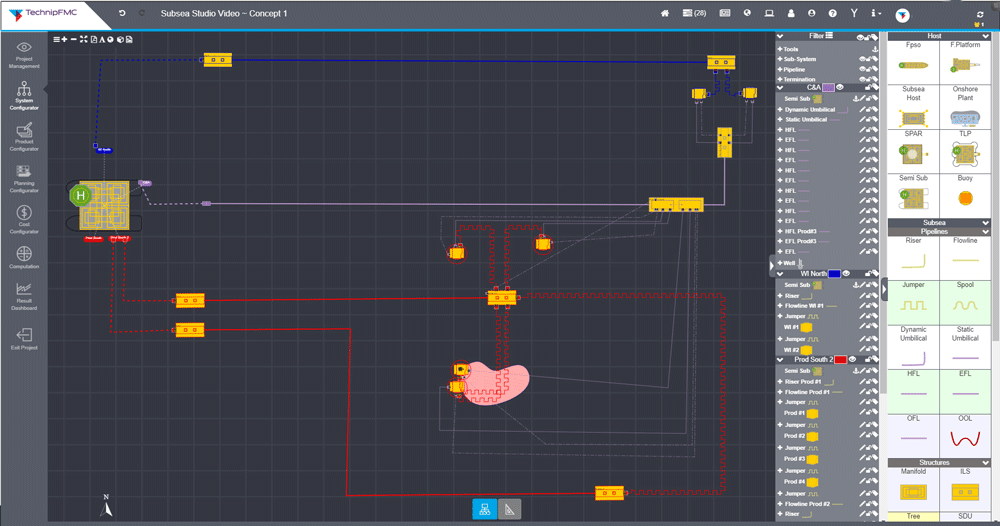
“The digitalization debate is now more centered on what value is created and how we can leverage our domain knowledge to deliver that value—not only to maintain it over time but to ensure interoperability and a trusted digital thread between various parties. Digital twins hold the promise of having significant or even huge cost savings. It is an ongoing journey, and we see already the benefits brought by those new ways of working.”
Reliability through maturity
Digital twins are a rapidly developing technology widely expected to become a significant contributor to the future management of major industrial sites. The digital twin market is estimated to grow from $3.8 billion in 2019 to $35.8 billion by 2025.
DNV GL’s Technology Outlook 2030, a research report identifying transformative technologies in key industries, highlights a digital value chain run by machines and algorithms as a prevailing trend for the oil and gas industry in the decade ahead. The research predicts cloud computing, advanced simulation, virtual system testing, virtual/augmented reality and machine learning will progressively merge into full digital twins, which combine data analytics, real-time and near-real- time data on installations, subsurface geology and reservoirs.
The use of twins and trust in their accuracy can be significantly increased by ensuring that data and information reflect the most up-to-date condition of the physical asset. To ensure the performance of digital twins matches expectations, organizations involved require a structured, systematic approach (Figure 3).
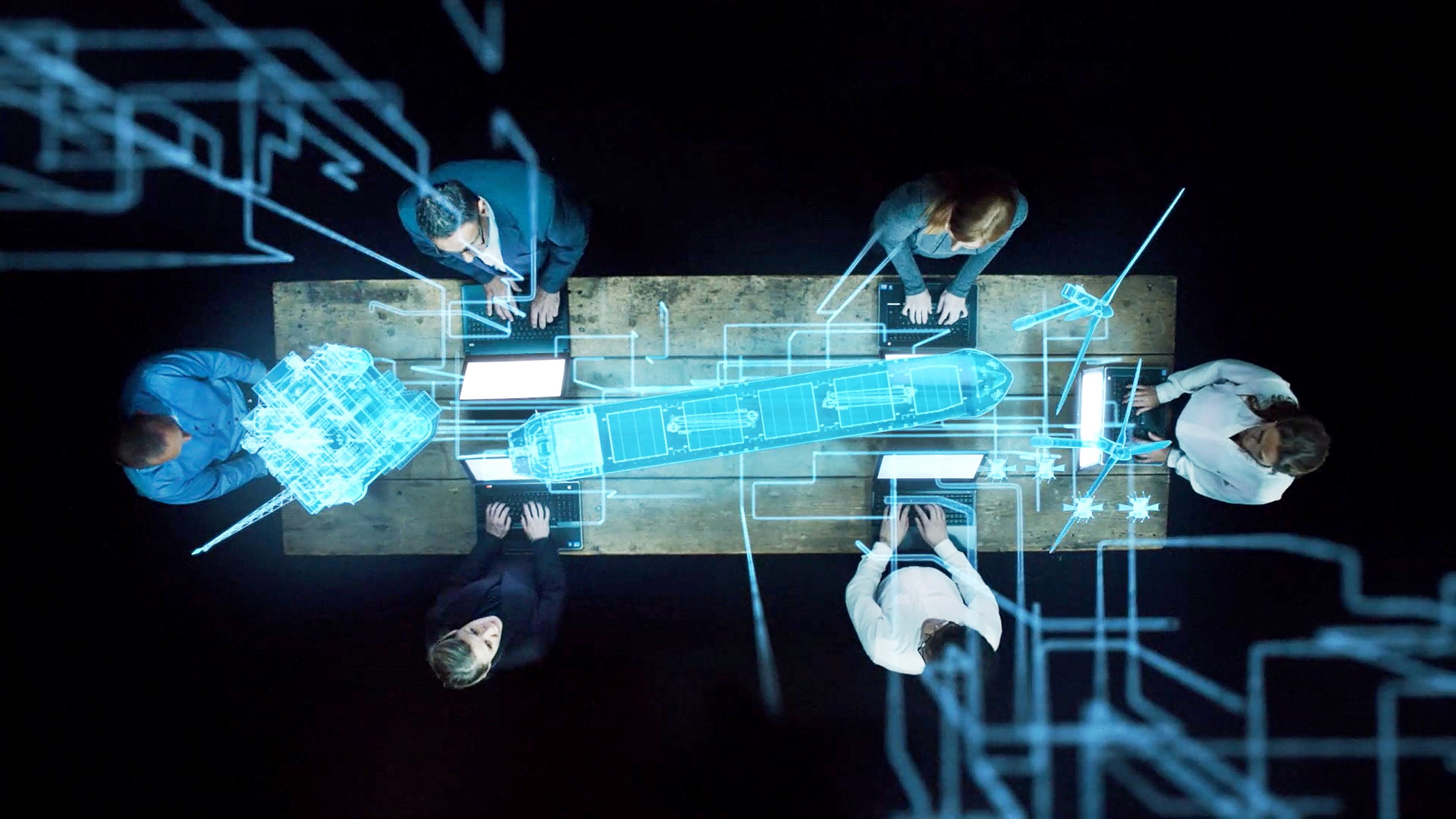
To support the industry achieving its goals of high-quality trust- worthy digital twins, DNV GL has published two frameworks as important building blocks. In April 2017, the data quality assessment framework DNVGL-RP-0497 was published to perform quality assurance across three areas:
- An organization’s capabilities to create and maintain high-quality data;
- Measuring the quality of data; and
- Assessing the risk of using the data.
Three years later, DNVGL-RP-0510 was published. This methodology assures the process of making, testing, deploying, maintaining and monitoring data science solutions based on data-driven methodologies like machine learning and artificial intelligence.
Solving the digital trust challenge will be key to its adoption, its acceleration to use at a greater scale and its acceptance as an accurate, valuable and trusted technology.
Recommended Reading
TGS, SLB to Conduct Engagement Phase 5 in GoM
2024-02-05 - TGS and SLB’s seventh program within the joint venture involves the acquisition of 157 Outer Continental Shelf blocks.
StimStixx, Hunting Titan Partner on Well Perforation, Acidizing
2024-02-07 - The strategic partnership between StimStixx Technologies and Hunting Titan will increase well treatments and reduce costs, the companies said.
Forum Energy Signs MOU to Develop Electric ROV Thrusters
2024-03-13 - The electric thrusters for ROV systems will undergo extensive tests by Forum Energy Technologies and SAFEEN Survey & Subsea Services.
Axis Energy Deploys Fully Electric Well Service Rig
2024-03-13 - Axis Energy Services’ EPIC RIG has the ability to run on grid power for reduced emissions and increased fuel flexibility.
TotalEnergies Rolling Out Copilot for Microsoft 365
2024-02-27 - TotalEnergies’ rollout is part of the company’s digital transformation and is intended to help employees solve problems more efficiently.



